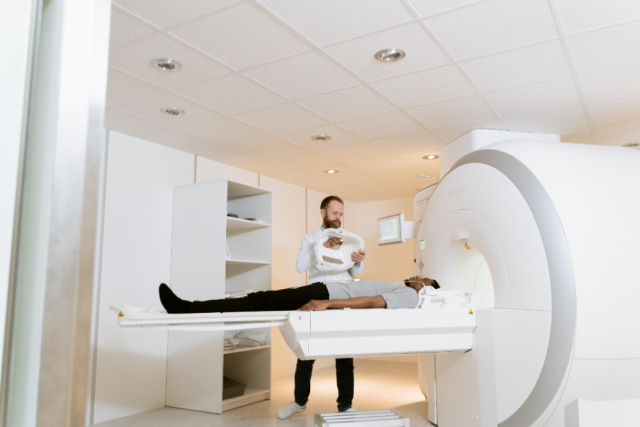Source: https://www.pexels.com/photo/photo-of-patient-looking-to-the-doctor-7088843/
CT scans are often used in modern medicine for diagnostics and monitoring the condition of your body. But did you know a full body CT scan can expose you to the same amount of radiation you’d receive from natural sources over the course of seven years?
As useful as CT scans are, they do come with a fair number of risks – a majority of which have to do with how much radiation you are exposed to during the scan.
While a single scan isn’t outright dangerous, too much exposure to ionizing radiation can damage your cells and result in diseases like cancer. That’s why it’s important to try and minimize radiation exposure from CT scans, even when you’re actually undergoing the scan itself. Here’s how.
Choose Alternatives When Possible
Contents
The best way to minimize the risk of radiation is to avoid the scan altogether. While in some cases it does become necessary, there are plenty of alternative imaging methods that you can opt for to get the same job done. For example, ultrasounds and MRIs don’t involve ionizing radiation, and are therefore less risky than CT scans.
Limit Unnecessary Scans
You should also try to minimize the number of scans you undergo. Of course, this will depend greatly on what your doctor suggests, but medical professionals are well aware of the risks that come with ionizing radiation.
Therefore, they will likely not suggest that you get a CT scan when it’s not really necessary, and you shouldn’t push for one if there are other, less risky methods available.
Use Low-Dose Techniques
You can also ask the staff in the radiology department to use low-dose CT techniques. This involves using a lower radiation dose, but without compromising too much on the quality of the images.
It’d be nice to assume that all radiology staff will do this without being asked, but not everyone is trained in these techniques, nor is everyone doing it by default. It never hurts to ask, so you should make sure to do so.
Use The Right Scanning Parameters
There are two main components of CT scans that affect radiation: tube current, and tube voltage.
Tube current is the amount of radiation that the CT scanner emits. Lower tube currents imply less radiation, but also come with noisier images. Tube voltage, on the other hand, is used to control the number of X-rays produced during the scan. High tube voltage will get clearer images, but exposes you to more radiation.
Radiology staff should also adjust these parameters to find the balance between minimum possible radiation exposure, and clear imaging.
There are also plenty of iterative reconstruction techniques that can be used, which can reduce image noise and improve the quality of the images so staff can use even lower doses than otherwise.
Again, it’d be nice to think that staff are doing this by default, but it is always best to ask in case they’re not.
Shield Sensitive Areas
You should also try to minimize the exposure to radiation on more sensitive parts of your body by shielding them. For example, if you are getting a CT scan around your head, a lead-lined cap can protect your brain from radiation. Lead has high attenuation and density, which blocks radiation.
Using lead, you can protect the sensitive parts of your body and your internal organs from radiation in the event that a scan becomes absolutely necessary.
Keep Records of Scans
Another way to minimize your exposure to radiation is by minimizing the number of scans you have to take. Of course, one way is to go for alternate methods when they are available, but sometimes CT scans do become necessary. In that case, keep a record of your scans so that your physicians can have access to them whenever needed, and you don’t have to go through the scan over and over again.
A single chest scan can expose you to about 10 mSv of ionizing radiation. A full body scan can go as far as 20 mSv or more. After 100 mSv, the probability of developing cancer later on in life starts going up, and you definitely don’t want that. Repeated scans can contribute to this because of the increased exposure to radiation.
Pediatric Protocol
Children are a lot more sensitive to radiation than adults, and a lot more likely to fidget and move around during the scan, which can result in poor imaging. But repeated scans on kids is a bad idea because they are growing and their cell division rate is much higher than that in adults.
Therefore, the protocol around CT scans is very different for children, and should be followed very carefully. Too many CT scans on kids can have disastrous effects on their health later in life.
While the risk of radiation exists, it’s still worth bearing in mind that the risks associated with CT scans are generally quite low, and the benefits will very frequently outweigh these risks. Still, radiation exposure is never a good thing, so it’s a good idea to minimize it as much as possible, especially for patients who need these scans very frequently.


